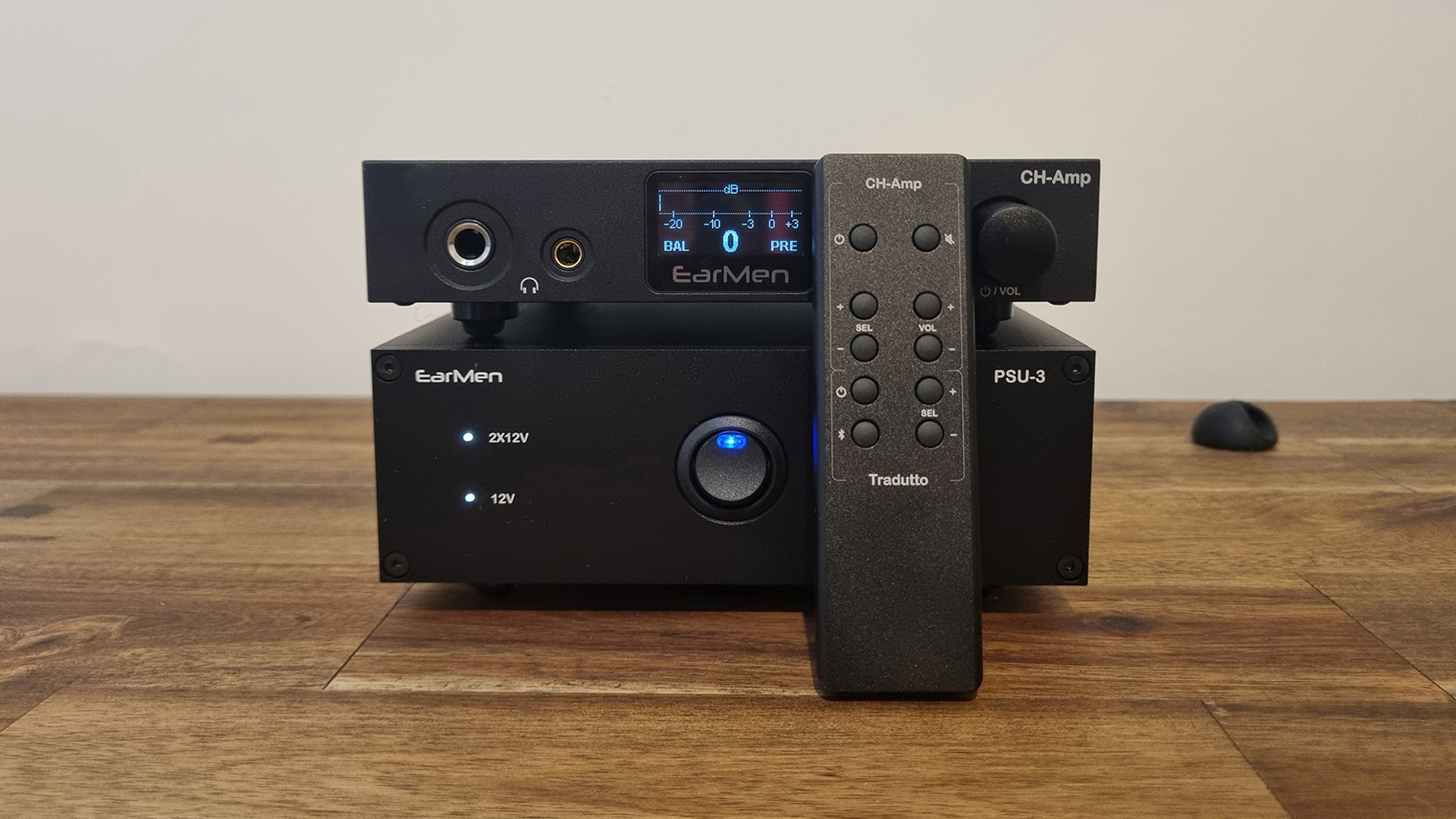What Hi-Fi? Verdict
EarMen progresses past portable solutions to develop a desktop headphone amp, preamplifier and power supply of moderate ability
Pros
- +
Crisp, open and precise sounding
- +
Solid, aesthetically traditional casework
- +
Good spread of analogue connections
Cons
- -
Lacks rhythmic ability
- -
Beaten for dynamic expression
- -
Primitive on-unit buttons
Why you can trust What Hi-Fi?
EarMen was created as an arm and sister company to respected European manufacturer Auris Audio by its founder Milomir "Miki" Trosic to serve a specific purpose: enhance portable listening. Unlike Auris Audio’s catalogue, which isn’t afraid of the super high-end (as its 24k gold Hawk tonearm and high-spec, hand-crafted range of amplifiers demonstrate), EarMen’s range was to be filled with small, affordable, battery-powered and USB DAC/headphone amplifiers designed to give phones, computers and other portable/desktop devices the sonic boost they so desperately needed.
But then in late 2021, once EarMen had a nice line of such units under its belt, Trosic couldn’t help himself; he took the EarMen brand a step further by developing a stack of more serious headphone components for the desktop: the Tradutto DAC, Staccato streamer, and the two-box CH-Amp analogue headphone amplifier we have under scrutiny here.
Features
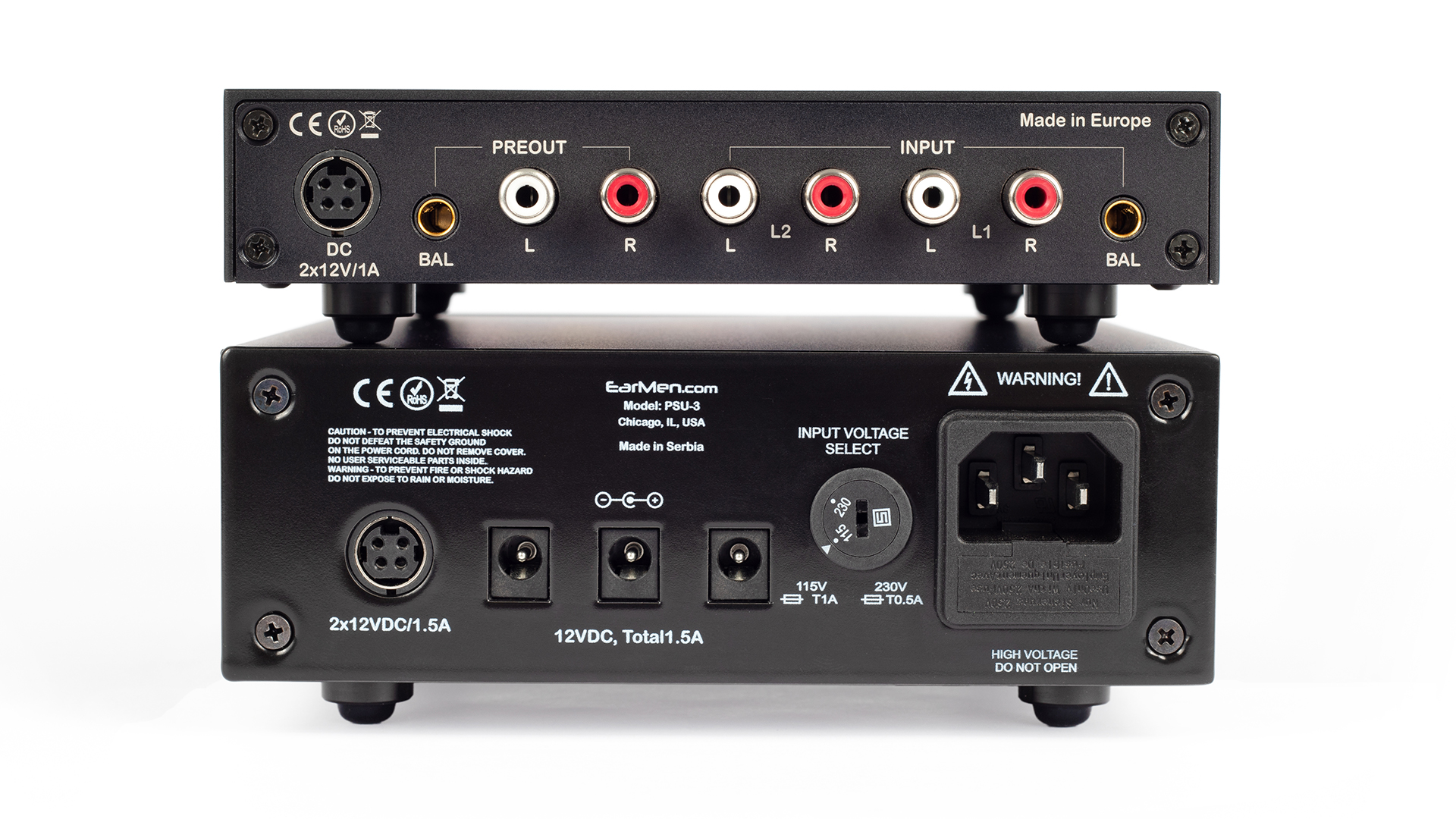
This is a fully balanced headphone amp with a built-in pre-amp that comes with a separate (supplied) linear power supply unit called the PSU-3. Its ‘fully balanced’ design means that as well as incoming balanced signals being output intact (albeit amplified), signals that come through its single-ended RCA inputs are converted to balanced ones, supposedly with the positive and negative signals perfectly in phase. The external power supply, meanwhile, has been developed to offer clean power with “minimal noise” to its headphone amplifier partner, and to the Tradutto and Staccato models as well if required.
EarMen has used its experience in headphone amplifier design, and no doubt that of Auris Audio, to design the CH-Amp. Specifically, it has chosen to use composite op-amps, praising their efficiency and better DC output-offset compared to alternatives such as the commonly used thermal feedback loop design. It says it has chosen capacitors and resistors it believes work best with these op-amps to produce a “neutral” sound. And it has embedded the circuit board in an aluminium housing for added insulation and extra protection against external influences, too.
Design
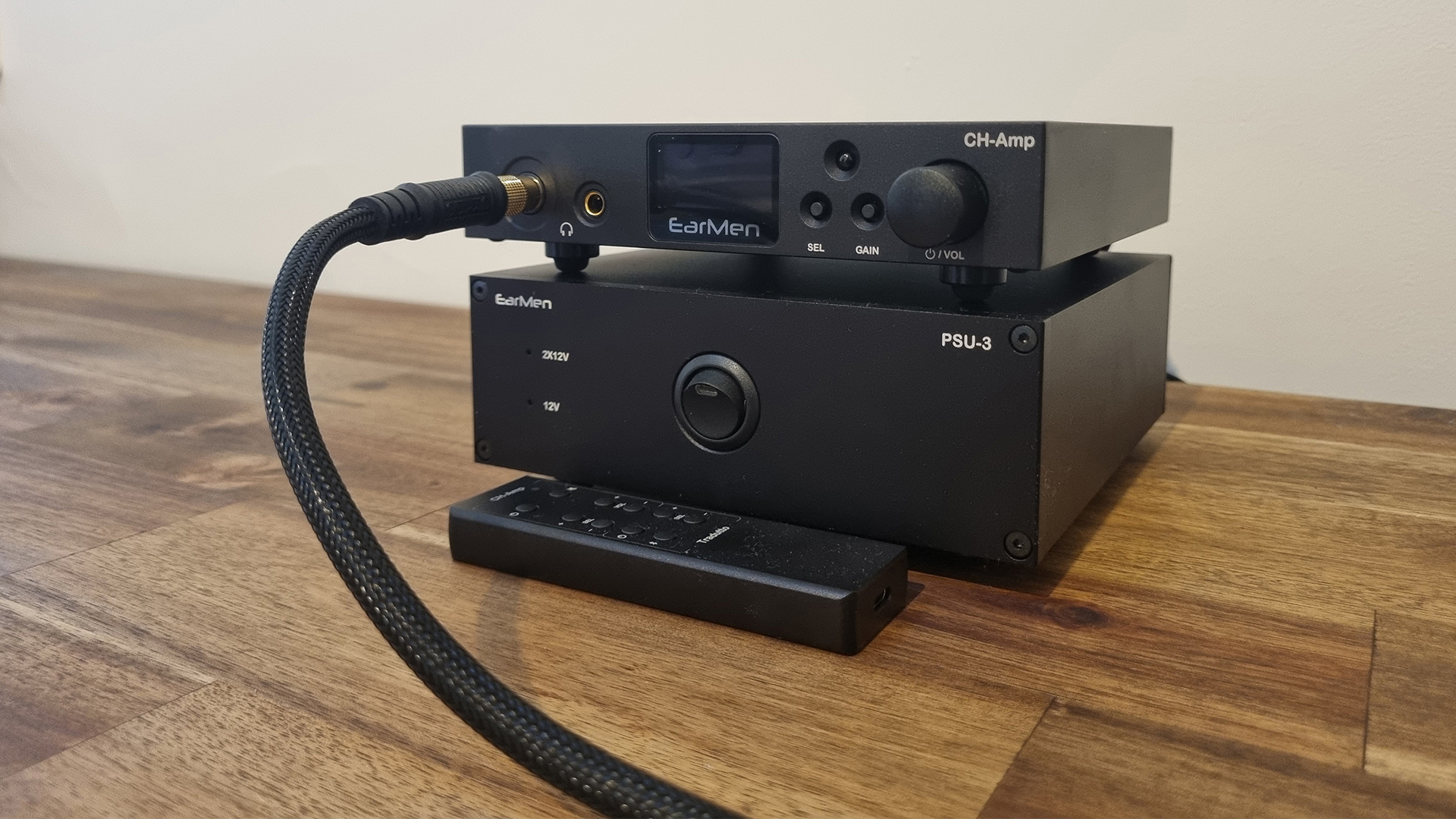
It isn’t just the circuit board that is wrapped in aluminium: the casework for the CH-Amp’s two units are made from it too – both are 15cm wide and deep, though the power supply is double the height of the amplifier at 6cm. They look very clearly cut from the same design cloth with their impressively solid build and functional chassis and do stack smartly together, with both units' feet giving the boxes a centimetre or so’s clearance from one another (if stacked) and the desk onto which they’re placed.
Next to the most contemporary-looking desktop alternatives – those from the likes of Chord Electronics or Schiit Audio, for example – the EarMen do look like they belong to a previous era due to the amplifier’s primitive OLED display and pin buttons, but we’re still fond of their mature, ‘traditional hi-fi’ look. The only thing that really bothers us is the ‘PSU-3’ and ‘CH-Amp’ labels not lining up with one another when the units are stacked. We know, it’s a small thing.
Mind you, that is offset by a couple of nice touches: the volume dial clicks subtly upon rotation, and even more rewarding is that when you unmute the CH-Amp (by pushing in the volume dial) the volume gradually increases back to the level it was at over a few seconds, rather than it just startling your ears.
Chargeable via USB-C, the aluminium slab of a remote control is a nicely weighted thing, too. The top half’s buttons control the CH-Amp’s power, mute, input selection and volume functions, while the bottom half’s buttons control a connected Tradutto – handy or futile depending on whether you own one, of course.
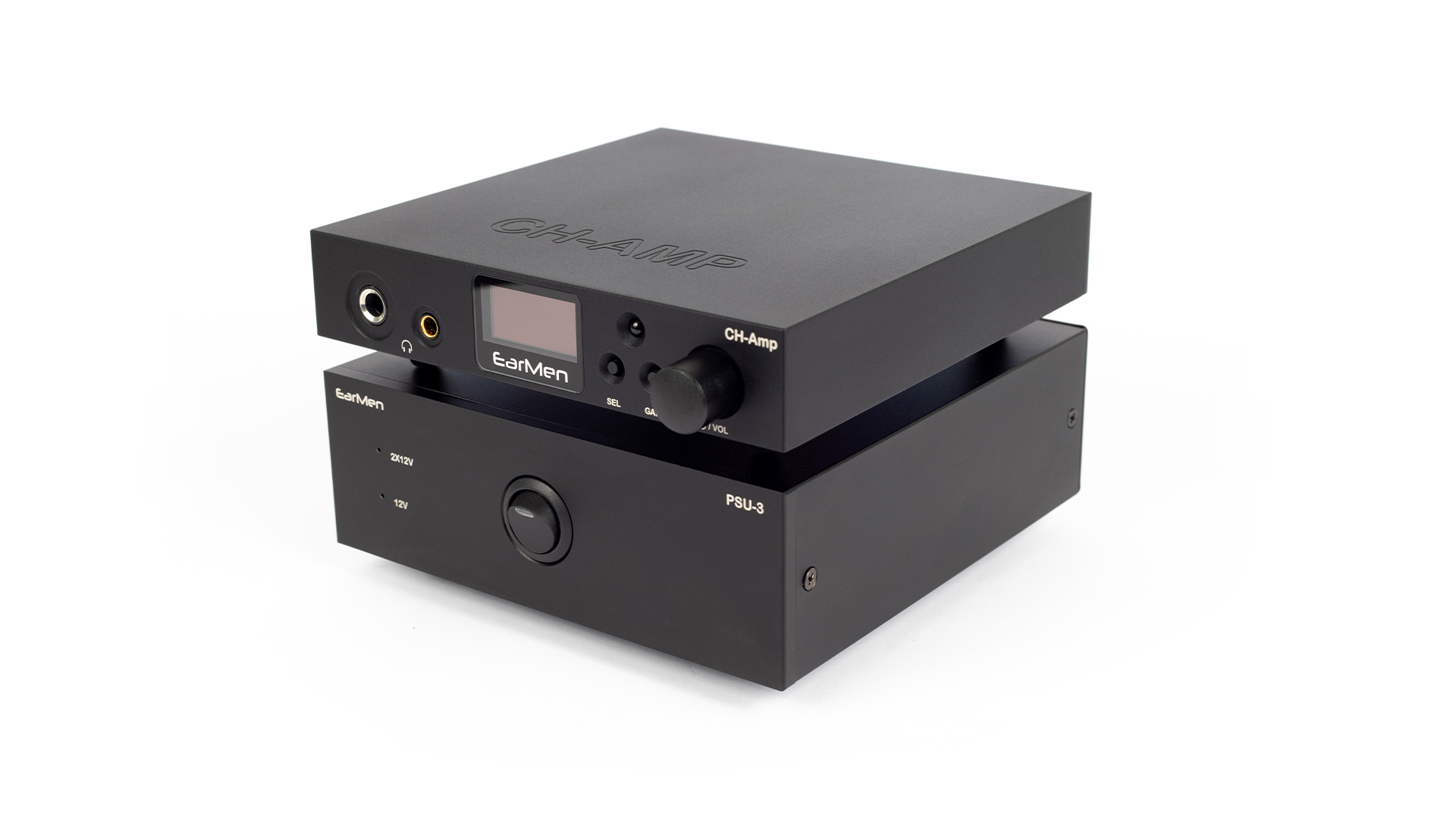
Outputs 6.3mm, balanced 4.4mm headphone outputs, RCA pre-out, balanced 4.4mm pre-outs
Inputs RCA x2, balanced 4.4mm Output level 8V (balanced), 4V (unbalanced)
Impedance 200 ohms (balanced), 100 ohms (unbalanced)
Dimensions (hwd) 3 x 15 x 15cm (unit), 6 x 15 x 15cm (power supply)
Weight 550g (unit), 1.59kg (power supply)
Fully aware we’re using repetition for emphasis here – ‘functional’ is a word that applies rather broadly to the CH-Amp. Not only are the pair compact enough to call them ideally sized for a desktop application, but they also offer a platter of connections that make them fit either as a middleman in a headphones-only desktop system or a wider hi-fi system, and can accommodate headphones that vary widely in type and impedance level. That’s because their front panel features both (typical) 6.3mm and (niche) balanced 4.4mm headphone outputs, as well as a gain button that switches between ‘high’ (1.5W into 32 ohms through the 6.3mm, and 3.8W into 32 ohms for balanced) and ‘low’ (260mW into 32 ohms for the 6.3mm and 1W into 32 ohms for balanced) modes.
The only other button on the front panel is a ‘select’ button for switching inputs, of which there are three – two RCAs and a balanced 4.4mm. Perhaps unsurprisingly considering its presence as an input and headphone output, the balanced 4.4mm connection is also offered as a pre-out, alongside an RCA option.
That rather comprehensive connectivity is completed by a 2x12V DC outlet necessary to receive power from the power supply via the supplied cable. Three IC cables are also provided in the box as alternative means of connection for those who also own the EarMen Tradutto DAC and Staccato streamer in the range, with the power supply able to deliver a total 12V/1.5A in this instance. Also noteworthy on the PSU’s rear panel is the voltage switch between 115V and 230V to accommodate different countries’ power requirements.
Sound
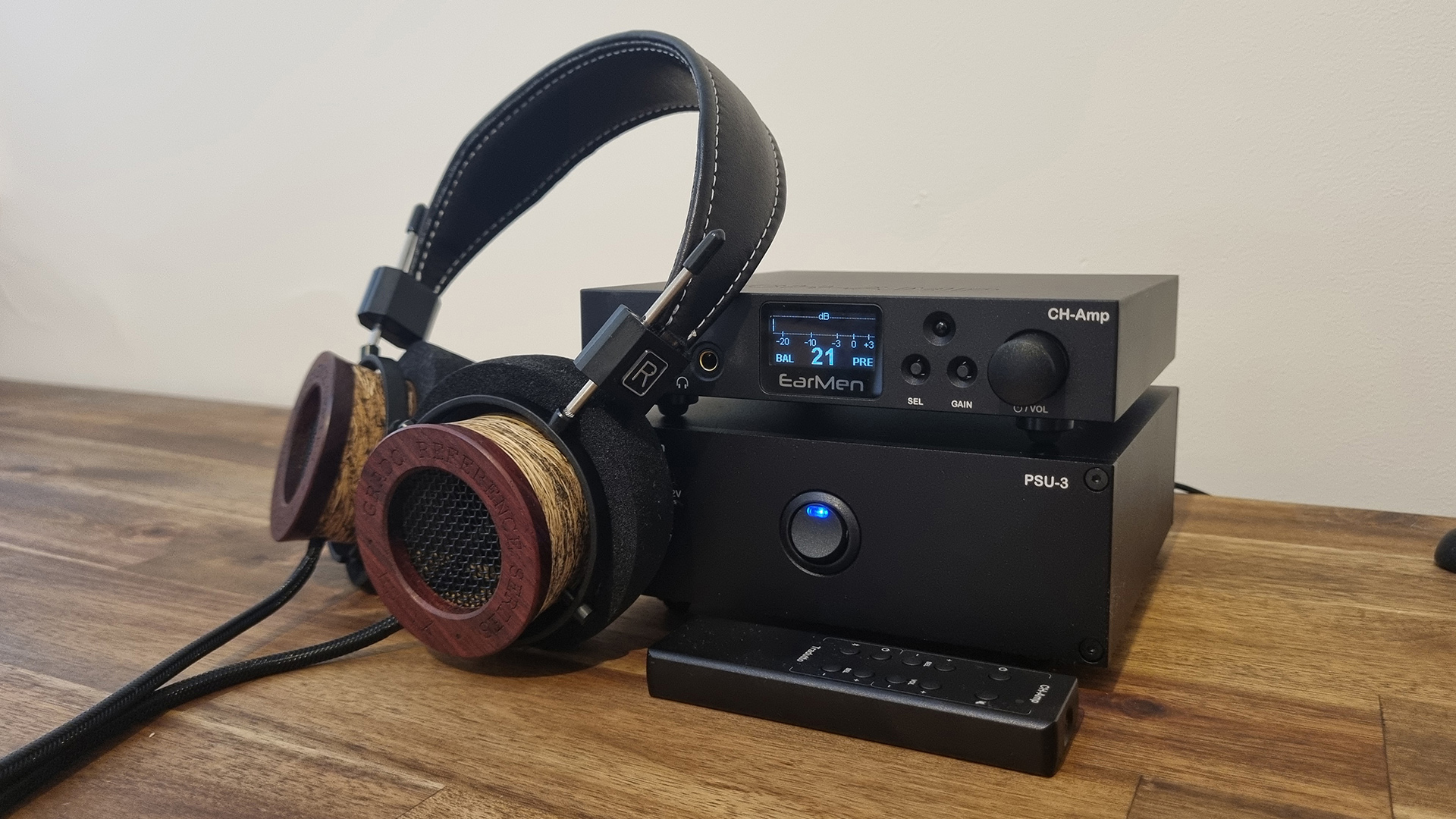
That stack may look smart – especially, we imagine, if you had the full four-component set – but we would actually recommend putting them side-by-side on a solid tabletop as opposed to vertically if you have the space. Do so and the CH-Amp’s sonic presentation sounds more solid and open.
We at What Hi-Fi? are rather new to EarMen products and therefore glad to hear the CH-Amp deliver an even-handed, crisp and precise sound from the off as we plug in an assortment of high-end headphones.
Playing Aldous Harling’s Old Peel, the CH-Amp capably surfaces decent detail levels and plots them precisely on a well-mapped canvas. In the song’s opener, the stop and start of each springy piano note and percussive strike are crisp, and when her vocal comes through the middle of the well-imaged soundstage, it’s clear and intact with her nasally flavour. Bass is controlled and well-judged in its presence, while mids and highs shine through with apt clarity.
That clear striving for an organised and meticulous sound is helped by the fact its presentation is invitingly big and spaciously open, so you don’t need lots of volume to feel physically immersed by the sound. In fact, the CH-Amp never feels short of power and can reach high volumes without distortion audibly creeping in.
We find the EarMen CH-Amp’s presentation does lose a bit of that openness and spaciousness through the preamp outputs as we connect it to our reference system (trying out both unbalanced and balanced routes), sounding smaller and a little more congested than we'd like given the price. The tonally balanced, conscientious character we hear through the headphone outputs thankfully remains, though.
But throughout our listening, whether it’s through headphones or a system, there is very clearly something missing, and our suspicions are confirmed as we plug into the Chord Hugo 2. For all its ambitions to be analytical, the EarMen can feel a little musically disjointed. We play Kate Bush’s Watching You Without Me – a go-to track for sussing out a piece of equipment’s timing – and the EarMen pairing doesn’t quite ‘get’ the interplay of the metronomic drums, double bass pizzicato and synth elements, to the point where this genius composition sounds criminally bland.
With both its DAC and headphone amplifier now in play, the Hugo 2 better communicates the cooperation between the musical strands, while proving more transparent in revealing the timbres of instruments and also more dynamically expressive too. The CH-Amp certainly conveys where Bush’s elastic vocal and the supple instrumentation rises and falls, proving that it isn’t bereft of dynamic contrast, but the extent of the fluctuations in the recording are notably more pronounced through the Chord’s headphone amplifier. Considering the likely cost of the headphone amp stage within the Hugo 2 DAC, that shouldn’t be the case.
Verdict
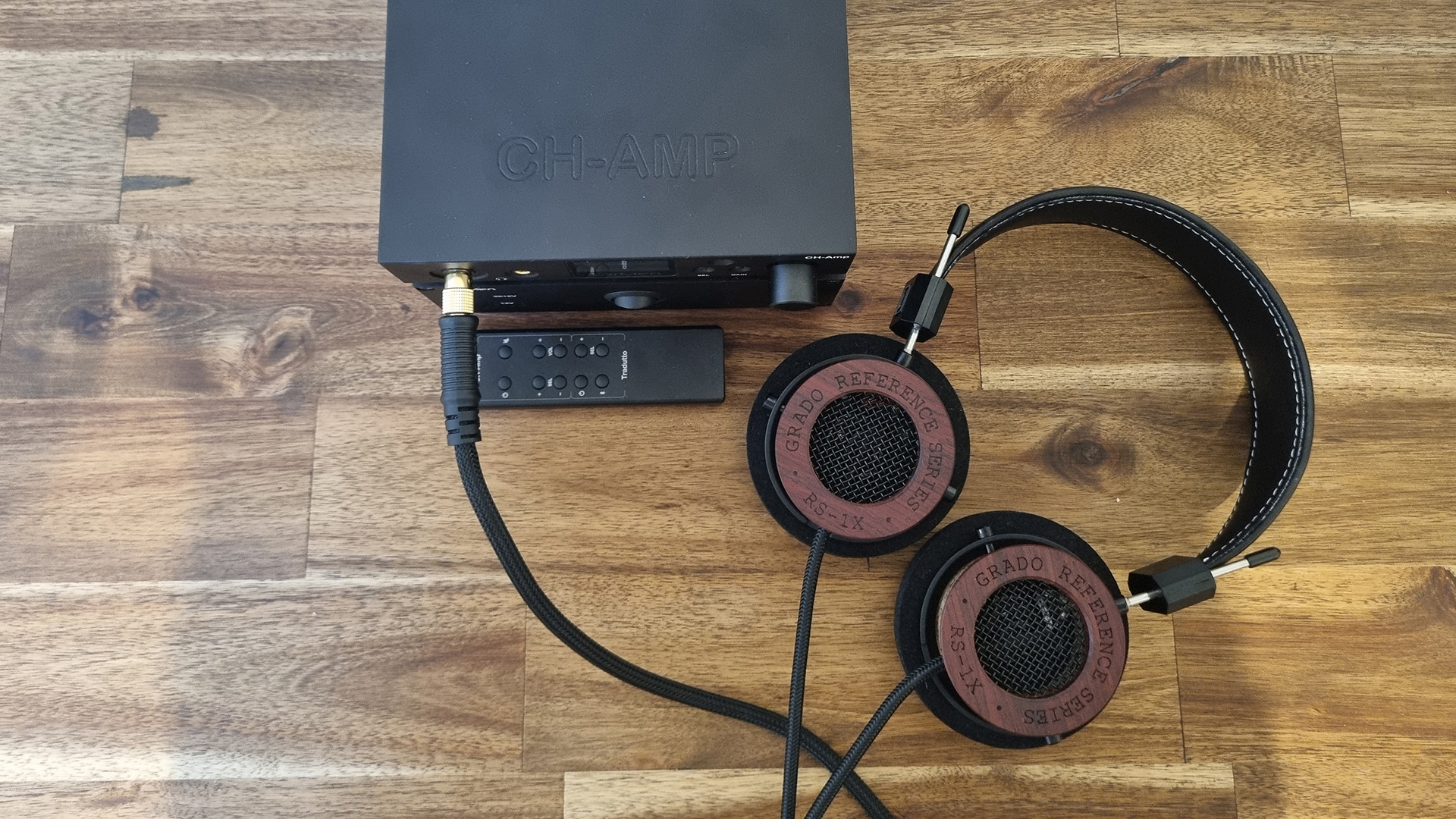
It leaves us in two minds about the EarMen CH-Amp. On the one hand, it’s a well-featured and nicely built analogue unit that sounds maturely crisp and precise and achieves some level of analytical status for that; but on the other, it lacks the rhythmic and dynamic expression we feel is essential for music to compel and entertain. Ultimately, we have here a brave attempt at a purist high-end headphone amplifier – one which is rarely undertaken these days – but unfortunately not quite one we can confidently champion.
SCORES
- Sound 3
- Features 4
- Build 4
MORE:
Also consider the Chord Anni
Boost your personal listening with the best headphone amplifiers
What Hi-Fi?, founded in 1976, is the world's leading independent guide to buying and owning hi-fi and home entertainment products. Our comprehensive tests help you buy the very best for your money, with our advice sections giving you step-by-step information on how to get even more from your music and movies. Everything is tested by our dedicated team of in-house reviewers in our custom-built test rooms in London, Reading and Bath. Our coveted five-star rating and Awards are recognised all over the world as the ultimate seal of approval, so you can buy with absolute confidence.
